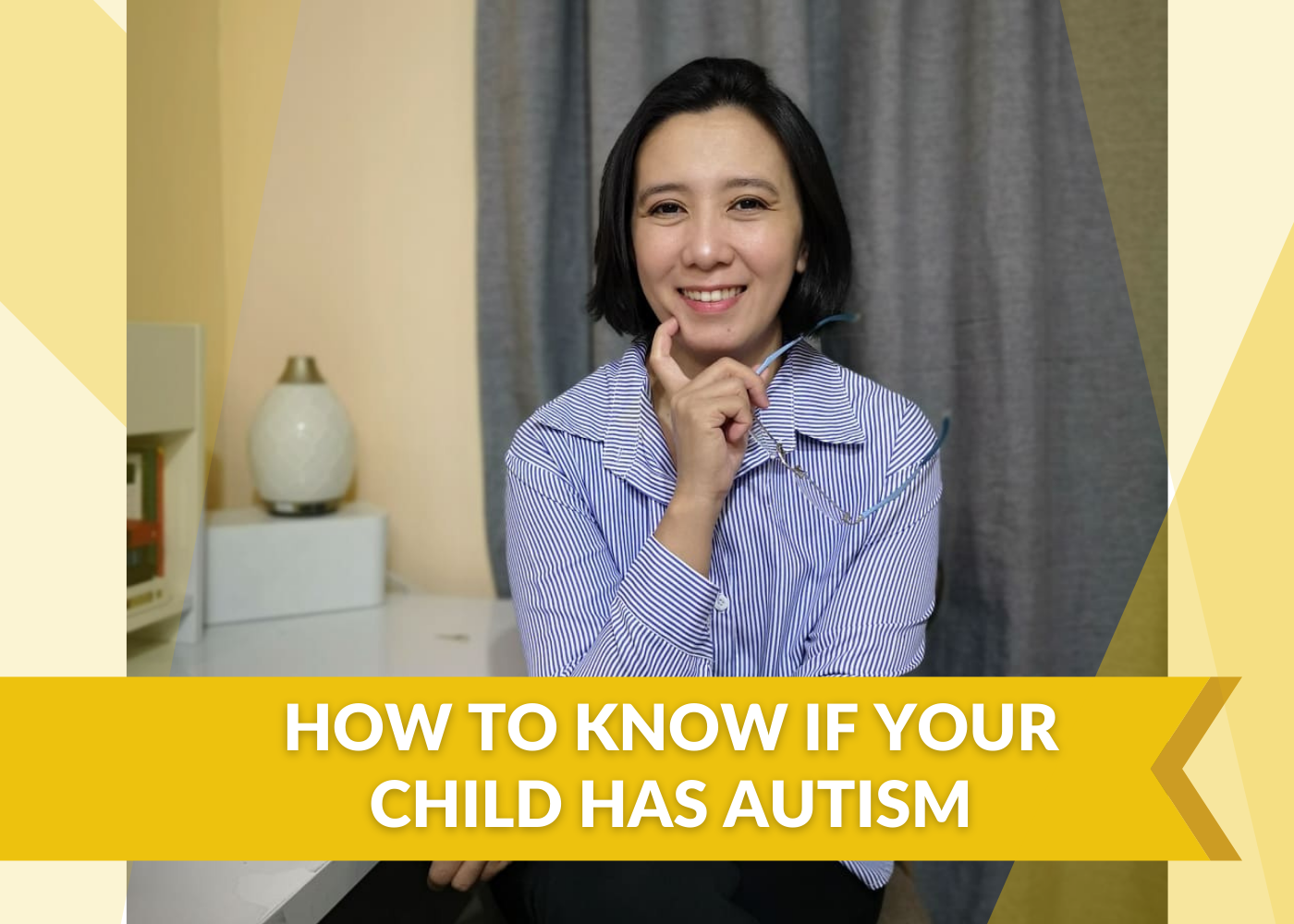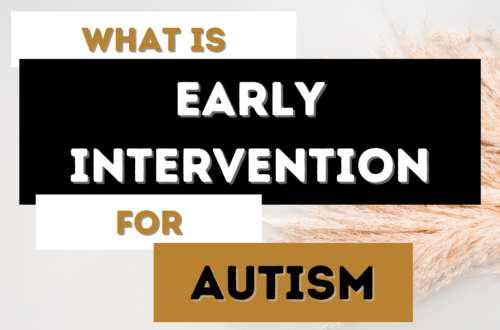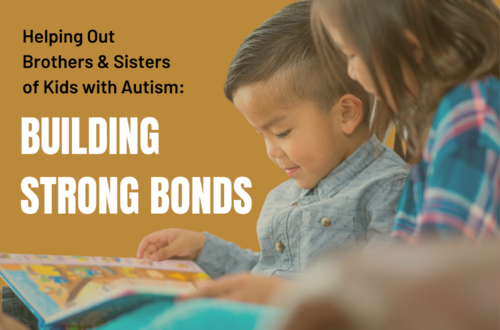How to Know If Your Child Has Autism Spectrum Disorder

Are you curious what is difference between ADHD and Autism? Or Autism vs. Speech Delay? Or Autism vs other developmental delays?
Here is what you will really have to know about autism.
WHEN I WAS NEW TO AUTISM…
I am perplexed with the characteristics and signs. I see that there were other children who look and talk like a typical child.
There were others who were nonverbal and unable to express their thoughts and needs in words.
Autism is a spectrum of disability because of the wide variation in the severity of symptoms people experience.
A child with autism may show different signs and characteristics that other child shows differently.
One may flap the hand, but the other talks nonstop. One child may show hyperactivity but the other avoids a lot of activity. It all depends on the individual.
That is why autism is a unique disability. They are all different in their unique way.
But, there are general, common characteristics that individuals with autism show.
With this general signs we are able to tell if a person has autism.
However, not every individual with autism have all of these signs.
But it also doesn’t mean that when your child has a few of these signs he or she has autism.
If you would like to know if your child has autism or suspects that he/she has, it is very important to go the developmental pediatrician or psychologist to have the proper diagnosis.
Knowing the diagnosis as early as possible will give your child early support that he needs. The early the better as the mind of a young child is still developing, it can still improve in some ways.
Early intervention is important.
NOW, LET ME TELL YOU THE SIGNS AND CHARACTERISTICS OF AUTISM.
Knowing this will help you get a general idea if your child has autism.
1. Eye Contact
A child with autism most of the time avoids eye contact.
They may find it uncomfortable to look at the person’s eye directly.
This is because eye contact involves social interaction with other people, which is one of the major impairment in autism.
2. Lack of imitation
Imitation also involves social interaction.
A child has to look and watch what the peer is doing, copy how he acts or what he does, and remember the action, and do the same thing.
This involves a lot of steps, focus and social interaction. It needs sensory processing which they may have difficulty with.
3. Unusual Body Movements
Others may show unusual body movements such as rocking in a chair, flickering of fingers, running back and forth in the room, bumping on furniture (which indicates poor body awareness or poor gross motor movement), banging head, continuous hand clapping.
4. Reading gestures
Gesture is a form of social communication and interaction.
There is meaning behind our action.
If we nod our head, we are telling the person ‘Yes’. If we shake our head we are saying ‘No’ to the person.
If we wave our hand we are saying bye bye or hello to that person.
When we are pointing we are showing something to a person. If we pull someone’s hands we need someone’s help or saying ‘let’s go’.
These are just some of the universal gestures that we use everyday.
There are so many gestures we make such as winking of our eyes, waving our two hands high up, crossing our arms to indicate we are angry, and putting our finger on our temple.
All of these gestures indicate something to people. However, for people with autism it is difficult to read the meanings of these gestures.
5. Sensory Processing Difficulty
Our senses play a huge part in our everyday routine.
Brushing our teeth, washing hands, bathing, toileting, sleeping, walking outside, listening to the sounds at home and outside, and many more.
These are just some of the activities we do daily that require our senses to work.
For individuals with autism, there are some activities that they avoid or they like to do more and more.
This indicates that they are over sensitive or under sensitive to particular sense (e.g. avoiding to brush teeth because of the bristles touching their gums or mouth, hair cut because of the sound of the razor, or repetitive flushing when toileting).
6. Responding to name
For children, this is usually a common sign of autism. Responding to name is important in social situations.
For example, when you know someone is in danger, we call that person by name and he/she responds to name appropriately. I
n a room, when you need someone’s attention we call them by their name.
When we meet someone in the grocery store, we call them by name.
Teaching a child with autism to respond to his name in different situations, we are improving their social skills, safety awareness and social relationship.
7. Seeking sameness
Individuals with autism like predictability.
They have difficulty with flexibility, which is a sign of autism.
A person with autism would like to use same object, do the same action, eat the same food, repeat the same movement, and the like.
This is because they have difficulty accepting change in the routine.
When change occur, it may be hard for them to accept causing meltdown, avoidance, and other behaviour problem.
8. Impairment in conversational skills
Conversation is a higher form of communication.
Conversation occurs between two or more people talking about the same topic, listening to someone’s thoughts, giving opinion, waiting for the turn to talk, or looking at the other person while talking.
Children with autism have a hard time with this skill.
Since autism ranges from mild to severe, some children may not be able to reach conversational level at some point due to the speech and language difficulty, problem with interaction, sensory issues and others.
AUTISM IS A VERY BROAD SPECTRUM OF DISABILITY.
Some individuals may show signs that are not present to another person.
There are still many other signs that can be the basis of diagnosing autism.
Such as being picky eater, fine and gross motor issues, peculiar voice (e.g. flat tone or monotonous pitch), hitting, biting, lack of understanding instructions, spinning, smelling, etc.
If you suspect that your child has autism, talk to his/her pediatrician and discuss the details of the problem. Again, the early diagnosis the better.
I hope this blog helps you get the general picture of the signs of autism.
You can also reach out to me to learn more about autism by sending me an email at teachingparentsautism@yahoo.com
You can also follow me on my facebook page – Quennie Lim.
I hope to see you there as I am growing my page.
Please watch out for other blog topics I will be posting as it will definitely help you in your autism journey with your child.
AUSOMELY Yours,
Quennie Lim
Teaching Parents Autism




